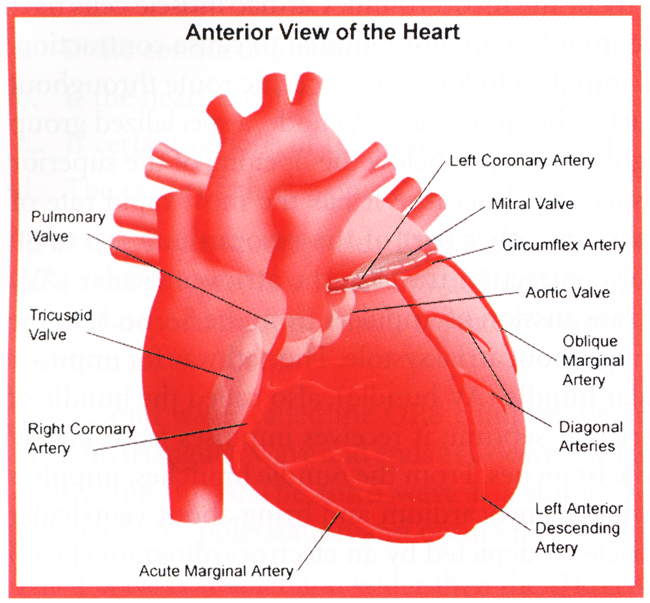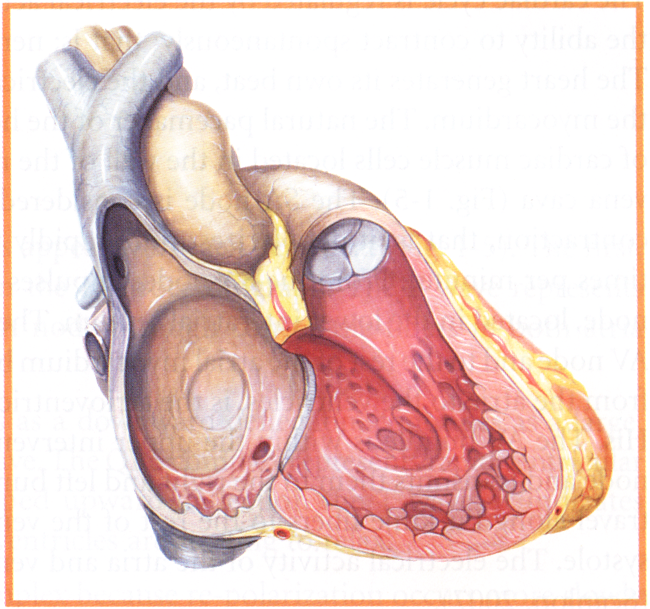The right and left coronary arteries are the first branches of the ascending aorta. (Fig. 1-3). The two arteries are further divided into smaller arteries and arterioles, then to capillaries. The coronary capillaries merge to form coronary veins, which empty blood into a large coronary sinus that returns blood to the right atrium. The purpose of the coronary vessels is to supply blood to the myocardium itself, because oxygen is essential for normal myocardial contraction. If a coronary artery becomes obstructed, by a blood clot for example, part of the myocardium becomes ischemic, that is, deprived of its blood supply. Prolonged ischemia will create an infarct, an area of necrotic (dead) tissue. This is a myocardial infarction, commonly called a heart attack.
The cardiac cycle is the sum total of events in one heartbeat. In its simplest form, the cardiac cycle is the simultaneous contraction of the two atria, followed by the simultaneous contraction of the two ventricles. Systole is another term for contraction. The term for relaxation is diastole. The atrial systole is followed by ventricular systole. There is, however, a significant difference between the movement of blood from the atria to the ventricles and the movement of blood from the ventricles to the arteries.

Fig. 1-2. Heart and Major Blood Vessels.

Fig. 1-3. Internal structures of Heart
 Prof. J.P.N. Mishra
Prof. J.P.N. Mishra
